Preservationist Supporter
City of Prescott
Heritage Supporter
Arizona Lottery
Archeological Consulting Services, Ltd.
Crocker and Associates
Arizona Public Service
Supporter
SWCA Environmental Consultants
Statistical Research, Inc.
Yavapai Prescott Indian Tribe
Kimley-Horn and Associates
Other Sponsors
DL Norton
Desert Viking Properties, Inc.
EnviroSystems Management, Inc.
Country Bank
Gammage & Burnham
Murphys Restaurant
Atwood Project Management
Yavapai Heritage Foundation
Friday, May 30, 2008
City of Prescott to build water tower above Indian Hill
The city of Prescott plans to build a huge 1.3 gallon water tower with a 85 foot cluster cell tower above "Indian Hill". The city has already bulldozed the Indian ruins of to one side. To find out how you can help stop the further desecration of this site, contact Debra Kaukol, founder of the "Save Indian Hill" coalition, at frankanddebk@aol.com or 928-776-1956.
Thursday, May 29, 2008
Arizona State Parks Heritage Fund Awards
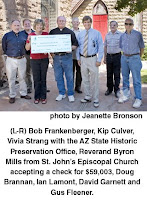 [Source: Copper Country News] -- Cobre Valley Center for the Arts and St. John’s Episcopal Church were pleased to host Arizona State Parks and State Historic Preservation Officers as they presented grant awards for local projects both completed and currently underway. The Cobre Valley Center for the Arts recently completed a $33,000 electrical upgrade with Marcanti Electric to the landmark old courthouse, allowing at last for future heating/cooling and renovation. This long overdue project was made possible by “Jailhouse Rock” fundraisers to reach the grant match amount to successfully apply for the Heritage Fund. Additionally, the Center for the Arts partnered with the Historic Globe Main Street Program to sponsor their neighbors on Oak Street, St. John’s Episcopal Church, which was in dire need of a new roof. Work on this landmark is currently underway. The Heritage Fund is made possible by the Arizona Lottery and is administered by Arizona State Parks.
[Source: Copper Country News] -- Cobre Valley Center for the Arts and St. John’s Episcopal Church were pleased to host Arizona State Parks and State Historic Preservation Officers as they presented grant awards for local projects both completed and currently underway. The Cobre Valley Center for the Arts recently completed a $33,000 electrical upgrade with Marcanti Electric to the landmark old courthouse, allowing at last for future heating/cooling and renovation. This long overdue project was made possible by “Jailhouse Rock” fundraisers to reach the grant match amount to successfully apply for the Heritage Fund. Additionally, the Center for the Arts partnered with the Historic Globe Main Street Program to sponsor their neighbors on Oak Street, St. John’s Episcopal Church, which was in dire need of a new roof. Work on this landmark is currently underway. The Heritage Fund is made possible by the Arizona Lottery and is administered by Arizona State Parks.
Wednesday, May 28, 2008
Justice's Paradise Valley adobe home slated for preservation
 [Source: Kathy Shayna Shocket, Republic] -- The 50-year-old adobe home where Sandra Day O'Connor often turned heated state politics into decisions over chalupas and tortillas will reign supreme once more as an arena for civic discourse. Rather than watching the adobe tucked away on a Paradise Valley cul-de-sac fall to a bulldozer, O'Connor and her friends are saving the home where she and husband John raised their three sons, Scott, Brian and Jay. "My husband John and I first bought over an acre of land for a grand sum of $4,000," the first female U.S. Supreme Court justice said during a nostalgic visit just before workers began dismantling the home for its move to Tempe.
[Source: Kathy Shayna Shocket, Republic] -- The 50-year-old adobe home where Sandra Day O'Connor often turned heated state politics into decisions over chalupas and tortillas will reign supreme once more as an arena for civic discourse. Rather than watching the adobe tucked away on a Paradise Valley cul-de-sac fall to a bulldozer, O'Connor and her friends are saving the home where she and husband John raised their three sons, Scott, Brian and Jay. "My husband John and I first bought over an acre of land for a grand sum of $4,000," the first female U.S. Supreme Court justice said during a nostalgic visit just before workers began dismantling the home for its move to Tempe. The home will be moved next to the Arizona Historical Society Museum at Papago Park and renamed the O'Connor House and Center for Civic Discourse. On her recent visit to the Denton Lane house, O'Connor slid her hand along an adobe wall as if it were one of the living desert creatures she adores. "John and I hand-scraped every one of these indentations in the adobe ourselves with an electric conduit, because the builder wasn't prepared to do that," she said. The O'Connors lived there from 1958 to 1981.
[Note: To read the full article, click here. Photo source: Republic.]
Old facades could give downtown Tucson a new face
 [Source: Teya Vitu, Tucson Citizen] -- Restoring a 1912 look to downtown Tucson may be the ideal way to celebrate the state's centennial in 2012 and to establish a "new" identity for the future. There are already nibbles to reawaken the downtown history that is still firmly in place - but mostly covered up, neglected or downright forgotten. With all the talk about an arena, museums and rainbow bridges, 90 percent of downtown revitalization could already be in place: the buildings on and near Congress Street and Broadway. Nearly all date from the 1900s, 1910s and 1920s - not that you'd necessarily know that with the awful mid-century facades that cover many of them. Check out the Hittinger Building (pictured), 120 E. Congress St., next to the Chicago Store.
[Source: Teya Vitu, Tucson Citizen] -- Restoring a 1912 look to downtown Tucson may be the ideal way to celebrate the state's centennial in 2012 and to establish a "new" identity for the future. There are already nibbles to reawaken the downtown history that is still firmly in place - but mostly covered up, neglected or downright forgotten. With all the talk about an arena, museums and rainbow bridges, 90 percent of downtown revitalization could already be in place: the buildings on and near Congress Street and Broadway. Nearly all date from the 1900s, 1910s and 1920s - not that you'd necessarily know that with the awful mid-century facades that cover many of them. Check out the Hittinger Building (pictured), 120 E. Congress St., next to the Chicago Store.This building had a drab 1940s look until owner Warren Michaels (pictured) in 2002 had architect Rob Paulus restore the 1901 neoclassical facade. Michaels is selling the building to Melanie Morrison, who will occupy it with 30 employees and her Morrison Ekre Bart Management Services, one of Tucson's top two apartment management firms. Michaels and Morrison unwittingly are providing the example of how downtown might be revitalized: spruce up a gorgeous building and fill it with people. Take a walk with Jonathan Mabry, Tucson's historic preservation officer, and he will tell you he wants to have more buildings restored to their early 20th century looks and occupied by businesses that attract visitors: boutique hotels, restaurants, retail shops. Sit down and chat with assistant city manager Karen Masbruch and Glenn Lyons, chief executive of the Downtown Tucson Partnership, and you will see they are about to unveil a facade program to add on to what Michaels, Morrison and Mabry are already doing.
[Note: To read the full article, click here. Photo source: Xavier Gallegos, Tucson citizen.]
Tuesday, May 27, 2008
Dig in to history: Check out Tucson's past at these restaurants
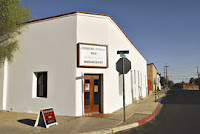 [Source: Tom Stauffer, Tucson Citizen] -- I'm always hesitant to put out lists of the best-anything, as I usually leave off one or more items that deserve inclusion or include one or more that deserve to be left off. That's why when it came time to work up a list of Tucson's best historical dining spots, I went straight to the best source I could find - R. Brooks Jeffery, coordinator of preservation studies at the University of Arizona College of Architecture, Planning and Landscape Architecture.
[Source: Tom Stauffer, Tucson Citizen] -- I'm always hesitant to put out lists of the best-anything, as I usually leave off one or more items that deserve inclusion or include one or more that deserve to be left off. That's why when it came time to work up a list of Tucson's best historical dining spots, I went straight to the best source I could find - R. Brooks Jeffery, coordinator of preservation studies at the University of Arizona College of Architecture, Planning and Landscape Architecture. Jeffery, who co-authored "A Guide to Tucson Architecture" with Anne M. Nequette, signed off on this unofficial list of local eateries that offer a nice variety of cuisine. Jeffery also lobbied hard for a sentimental favorite that didn't make the list but earned a mention here - Pat's Drive-In, 1201 N. Grande Ave. "I insist that Pat's be included on the list," Jeffery said, only half-jokingly. "I'm proud to put my name next to that one as some of our best historic dining. It may not be that old, but it's classic as drive-ins go."
[Note: To read the full article, click here. Photo source: Val Canez, Tucson Citizen. Pictured: The Cushing Street Bar & Restaurant, 198 W. Cushing St., originally a home, then a store.]
Valley couple awarded Medal of Excellence
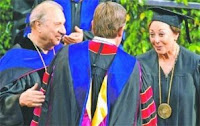 [Source: Peter Corbett, Arizona Republic] -- A Valley couple who founded the Armenian Church and Cultural Center in Scottsdale was honored earlier this month by Arizona State University. ASU President Michael Crow presented Gregory and Emma Melikian with the University Medal of Excellence for their leadership and civic engagement.
[Source: Peter Corbett, Arizona Republic] -- A Valley couple who founded the Armenian Church and Cultural Center in Scottsdale was honored earlier this month by Arizona State University. ASU President Michael Crow presented Gregory and Emma Melikian with the University Medal of Excellence for their leadership and civic engagement. The Melikians have supported ASU for more than three decades, including an endowment of the Melikian Center and its Critical Languages Institute. They have also invested in historic preservation of more than a dozen properties in Scottsdale, Tucson and Phoenix, including the San Carlos Hotel, downtown landmark since 1928. The Melikians were presented their medals at the ASU graduation ceremonies May 8. The University Medal of Excellence honors innovative leaders who have advanced awareness and action on issues that affect the well-being and positive development of their communities. [Photo source: ASU.]
Preserving our sense of place (op-ed)
 [Source: Arizona Republic] -- As construction workers labored to transform a former bank tower in downtown Phoenix into a splendid boutique hotel, an industry consultant noted approvingly that "there is demand for this." Indeed, there appears to be much demand for new projects downtown. The Hotel Monroe (pictured) under construction - formerly the Valley National Bank - is but one of many developments. But the declaration that "there is a demand for this" prompts the question: What is this? Merely another hotel? Well, there is growing demand for hotels in downtown, certainly. But projects such as the Hotel Monroe represent something more.
[Source: Arizona Republic] -- As construction workers labored to transform a former bank tower in downtown Phoenix into a splendid boutique hotel, an industry consultant noted approvingly that "there is demand for this." Indeed, there appears to be much demand for new projects downtown. The Hotel Monroe (pictured) under construction - formerly the Valley National Bank - is but one of many developments. But the declaration that "there is a demand for this" prompts the question: What is this? Merely another hotel? Well, there is growing demand for hotels in downtown, certainly. But projects such as the Hotel Monroe represent something more. In Phoenix, perhaps more than in any other major American city, there is a need - a demand, really - for the old to be incorporated into the new. This concept is becoming increasingly important to this burgeoning community - adaptive reuse of existing spaces. "More than ever, we are realizing how important adaptive reuse is when your goal is to build a truly sustainable city," said Phoenix Mayor Phil Gordon, acknowledging the city's role in celebrating National Preservation Month. As the outward push of development slows precipitously, now is a good time to emphasize those landmarks we already possess and what new uses we might make of them. The $100 million Hotel Monroe, in fact, is but one (albeit, spectacular) example of adaptive reuse of existing structures in the center city. [Note: To read the full article, click here.]
Friday, May 23, 2008
City of Phoenix increases number of sustainability programs
The city of Phoenix has updated its Sustainability Summary increasing the total number of sustainability programs from 70 to more than 80. The summary provides brief descriptions of all of the city of Phoenix’s environmental stewardship efforts, some of which have been in place for decades. “To be successful, Phoenix must be an environmental leader. This summary showcases Phoenix's numerous environmental programs,” said Councilman Greg Stanton, chair of the Parks, Education, Bioscience, and Sustainability Subcommittee. "The depth and variety of programs demonstrates that Phoenix is an environmental leader, both in the Valley and throughout the nation.”
The updated summary includes recent information on the city’s Climate Action efforts and participation in Earth Hour, in addition to new information about Phoenix Recycles, Bag Central Station, the Convention Center solar project and the city’s recently adopted renewable energy goal, the Brownfields Environmental Technician Job Training Program, and Environmentally Preferable Purchasing Program. Enhancements have been reported in the areas of environmental leadership, land use policies, transportation, air quality, water conservation, heat island, energy conservation, green building, pollution prevention, HISTORIC PRESERVATION, and riparian area conservation. To view the complete summary online, click here. To view the specific page on HISTORIC PRESERVATION, click here.
The updated summary includes recent information on the city’s Climate Action efforts and participation in Earth Hour, in addition to new information about Phoenix Recycles, Bag Central Station, the Convention Center solar project and the city’s recently adopted renewable energy goal, the Brownfields Environmental Technician Job Training Program, and Environmentally Preferable Purchasing Program. Enhancements have been reported in the areas of environmental leadership, land use policies, transportation, air quality, water conservation, heat island, energy conservation, green building, pollution prevention, HISTORIC PRESERVATION, and riparian area conservation. To view the complete summary online, click here. To view the specific page on HISTORIC PRESERVATION, click here.
Oro Valley builder to preserve village center as project's jewel
 [Source: Lourdes Medrano, Daily Star] -- The remnants of an ancient civilization will be showcased as an archaeological jewel in a modern development of luxury condos, houses, shops and restaurants in Oro Valley. The developer of Vistoso Town Center, a planned 87-acre community in Rancho Vistoso, wants to make the most of the site on which a Hohokam village once thrived. "I'm very interested in archaeology and the past of the Southwest, so I was very excited to acquire a piece of land that had such a significant archaeological value," local developer Steve Solomon said. Area archaeologists say Honey Bee Village (pictured) beneath the land dates to about 500 A.D., when the Hohokam first settled along the Honey Bee Wash in the Cañada del Oro Valley.
[Source: Lourdes Medrano, Daily Star] -- The remnants of an ancient civilization will be showcased as an archaeological jewel in a modern development of luxury condos, houses, shops and restaurants in Oro Valley. The developer of Vistoso Town Center, a planned 87-acre community in Rancho Vistoso, wants to make the most of the site on which a Hohokam village once thrived. "I'm very interested in archaeology and the past of the Southwest, so I was very excited to acquire a piece of land that had such a significant archaeological value," local developer Steve Solomon said. Area archaeologists say Honey Bee Village (pictured) beneath the land dates to about 500 A.D., when the Hohokam first settled along the Honey Bee Wash in the Cañada del Oro Valley. "This site is quite significant because it will provide us with a fuller picture of Hohokam life than we've had before," said Henry Wallace of Desert Archaeology Inc., the Tucson company doing the archaeological work on Honey Bee Village. Archaeologists say the site was home to the Hohokam until about 1200 A.D. First recorded in the late 1970s, the village sat largely undisturbed for years, as new housing sprouted on top of other archaeological sites. Even as some eyed the site for potential development, the fate of Honey Bee Village would be different. By the time Solomon bought the land in 2005, after two years of discussion with the previous owners, efforts already were under way to preserve it. In 2004, Pima County voters approved a $1 million bond issue to buy the site, but officials later deemed it unaffordable. Instead the county, Solomon and Oro Valley entered into a contract in 2006.
[Note: To read the full article, click here. Photo source: Jim Davis, Daily Star.]
Wednesday, May 21, 2008
Deadline extended for Governor’s tourism award nominations
[Source: Arizona Office of Tourism] -- AOT is extending the deadline to submit your nominations for the 2008 Governor’s Tourism Awards. These industry awards honor individuals and organizations that have made noteworthy contributions during the past year for the betterment of the tourism industry. These award recipients are fine examples of leadership, commitment and teamwork that make the Grand Canyon State a premier travel destination.
The awards will be presented at the 28th Annual Arizona Governor’s Conference on Tourism at the Westin La Paloma Resort & Spa in Tucson on July 10, 2008. All submissions must be received by 5 p.m. on Friday, May 30, 2008. Please visit the Governor’s Conference on Tourism Website for award categories, guidelines and nomination forms. For more information, contact Kiva Couchon at 602-364-3724 or via e-mail at kcouchon@azot.gov. To register for the conference, click here.
The awards will be presented at the 28th Annual Arizona Governor’s Conference on Tourism at the Westin La Paloma Resort & Spa in Tucson on July 10, 2008. All submissions must be received by 5 p.m. on Friday, May 30, 2008. Please visit the Governor’s Conference on Tourism Website for award categories, guidelines and nomination forms. For more information, contact Kiva Couchon at 602-364-3724 or via e-mail at kcouchon@azot.gov. To register for the conference, click here.
Tuesday, May 20, 2008
2008 list of America's 11 most endangered historic places announced
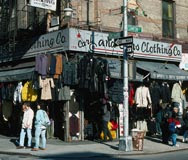 [Source: National Trust] -- On May 20th in New York City, the National Trust for Historic Preservation named the 2008 list of America’s 11 Most Endangered Historic Places®, an annual list that highlights important examples of the nation’s architectural, cultural and natural heritage that are at risk for destruction or irreparable damage. The 21st annual list includes: California’s State Park System, whose budget has been repeatedly slashed and now faces $1.2 billion in deferred maintenance; Charity Hospital and adjacent neighborhood in New Orleans, where proposed development projects would abandon the currently closed (but reparable) hospital and would demolish 25 blocks with 200 homes to make way for two new hospital complexes; and New York’s Lower East Side (pictured), the neighborhood that embodies the history of immigration in America, that is steadily and irrevocably being erased by inappropriate development.
[Source: National Trust] -- On May 20th in New York City, the National Trust for Historic Preservation named the 2008 list of America’s 11 Most Endangered Historic Places®, an annual list that highlights important examples of the nation’s architectural, cultural and natural heritage that are at risk for destruction or irreparable damage. The 21st annual list includes: California’s State Park System, whose budget has been repeatedly slashed and now faces $1.2 billion in deferred maintenance; Charity Hospital and adjacent neighborhood in New Orleans, where proposed development projects would abandon the currently closed (but reparable) hospital and would demolish 25 blocks with 200 homes to make way for two new hospital complexes; and New York’s Lower East Side (pictured), the neighborhood that embodies the history of immigration in America, that is steadily and irrevocably being erased by inappropriate development.[Click here to see the entire list, learn how you can help save these places, and view the 11 Most video (in partnership with The History Channel).]
ASU helps develop new perspective of Grand Canyon
 [Source: Arizona State University] -- For most people, including many of the nearly 5 million annual visitors to the Grand Canyon, the geological icon in northern Arizona is a striking landscape – a majestic and physical place of wonderment. But an ASU team of educators, comprised of graduate students and faculty members from the history department and graduate students from the School of Geographical Sciences, are out to deepen that perspective with a new interpretation of the Grand Canyon’s human history.
[Source: Arizona State University] -- For most people, including many of the nearly 5 million annual visitors to the Grand Canyon, the geological icon in northern Arizona is a striking landscape – a majestic and physical place of wonderment. But an ASU team of educators, comprised of graduate students and faculty members from the history department and graduate students from the School of Geographical Sciences, are out to deepen that perspective with a new interpretation of the Grand Canyon’s human history.Their project, “Interpreting America’s Historic Places: Nature, Culture, and History at the Grand Canyon,” aims to paint a cultural landscape of the canyon through a suite of public educational materials, including a digital audio-tour, walking tour brochure, interactive Web site and DVD, and educational kits known as traveling trunks, with curriculum and classroom materials that can be used by K-12 teachers nationwide. Supported through a significant $365,000 grant that spans three years from the National Endowment for the Humanities and a $200,000 investment from and partnership with the Grand Canyon Association, the project had humble beginnings with a $9,000 seed grant from ASU’s Institute for Humanities Research. [Note: To read the full article, click here.]
Help APF save local historic buildings
%5B1%5D.jpg) [Source: Aaron Royster, Kingman Daily Miner] -- The Arizona Preservation Foundation is looking to find Arizona's most endangered historic locations, and they need your help. Last year, the J. B. Wright House, the historic St. Mary's Church (pictured) and the former Mohave County Hospital were placed on the list. All three Kingman locations were added to the National Register of Historic Places on May 14, 1986. There are 54 locations in Kingman on the register. Several buildings are now in danger of being destroyed. With the efforts of preservation professionals and historians, the list identifies critically endangered properties of major historical or archaeological significance to the state. Once on the list, the locations receive assistance from the foundation in developing support to remove the threat. "By calling attention to our most threatened historic and archaeological sites, we increase public awareness of preservation issues and focus critical attention on selected sites to assist in their preservation," Board member Jim McPherson said in a news release.
[Source: Aaron Royster, Kingman Daily Miner] -- The Arizona Preservation Foundation is looking to find Arizona's most endangered historic locations, and they need your help. Last year, the J. B. Wright House, the historic St. Mary's Church (pictured) and the former Mohave County Hospital were placed on the list. All three Kingman locations were added to the National Register of Historic Places on May 14, 1986. There are 54 locations in Kingman on the register. Several buildings are now in danger of being destroyed. With the efforts of preservation professionals and historians, the list identifies critically endangered properties of major historical or archaeological significance to the state. Once on the list, the locations receive assistance from the foundation in developing support to remove the threat. "By calling attention to our most threatened historic and archaeological sites, we increase public awareness of preservation issues and focus critical attention on selected sites to assist in their preservation," Board member Jim McPherson said in a news release.The former Mohave County Hospital, 301 W. Beale St., was built in 1922. It has also been used as an annex for the Mohave County Sheriff's Office. "Both the county and the city now want to tear down the building, though the city would like to salvage the façade," the release stated. "Neither is acceptable." The Mohave County Public Works Department has put out a call for bids for the structural demolition of the building. A pre-bid hearing was held on Friday at the Mohave County Administration Building. Bids will be accepted in a sealed envelope at the Mohave County Procurement Department, 700 W. Beale St., until 2 p.m. on May 30. Once a bid is accepted, the contractor will have 90 days to complete the work. On Sept. 19, Doug Ohleman, chairman for Kingman's Historic Preservation Commission, wrote a letter to the Mohave County Board of Supervisors concerning the former Mohave County Hospital building. "As a property owner downtown, Mohave County has an opportunity and a responsibility to contribute to the preservation of Kingman's past by making a concerted effort to be included," Ohleman wrote. [Note: To read the full article, click here.]
National Trust grades Forest Service
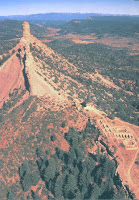 [Source: Joe Hanel, Journal Denver Bureau] -- National forests have at least 325,000 historic sites hiding among their trees, and most of them are at risk because of a lack of money at the Forest Service, according to a national preservation group. “Thousands of significant landscapes, structures and sites — places that record important chapters in America’s story — are in danger of being lost forever,” said Richard Moe, president of the National Trust for Historic Preservation. The group released its 52-page national report Thursday in Denver.
[Source: Joe Hanel, Journal Denver Bureau] -- National forests have at least 325,000 historic sites hiding among their trees, and most of them are at risk because of a lack of money at the Forest Service, according to a national preservation group. “Thousands of significant landscapes, structures and sites — places that record important chapters in America’s story — are in danger of being lost forever,” said Richard Moe, president of the National Trust for Historic Preservation. The group released its 52-page national report Thursday in Denver. Moe cited Chimney Rock Pueblo (pictured) as a great example of historic sites on Forest Service land. The ruins between Durango and Pagosa Springs mark the northernmost outpost of the Chaco Canyon civilization. The Forest Service and local volunteers from the Chimney Rock Interpretive Association have cooperated to preserve the pueblo. But the Forest Service needs a full-time person to work at the site, Moe said. “The Forest Service shouldn’t have to depend on the kindness of strangers to preserve historic sites,” he said. But other sites don’t enjoy the same high profile. Of the 325,000 known historic sites on national forest lands, only 2,000 are listed on the National Register of Historic Places. And archaeologists have surveyed only about one-fifth of America’s national forests, according to the report. [Note: To read the full article, click here.]
Monday, May 19, 2008
Organ Pipe archaeology job announcement
 The Organ Pipe Cactus National Monument is recruiting for an archaeologist at Organ Pipe in Ajo, Arizona.
The Organ Pipe Cactus National Monument is recruiting for an archaeologist at Organ Pipe in Ajo, Arizona. Major duties:
The incumbent serves as the cultural resource (CR) program manager for Organ Pipe Cactus National Monument (ORPI) under the vanishing treasures program. The CR program manager is responsible for conducting site assessments, systematic site condition monitoring, National Register evaluations, field inspections, and data collection and analyses for specific historic structures at ORPI. The incumbent records and evaluates site condition, including architectural stability and nature and extent of environmental and human impacts, threats and disturbances. Independently researches and collects site preservation records and compiles them into site preservation history reports. Incorporates monitoring and ruins preservation field data into original, professional quality final reports.
Monitors construction or other ground disturbing activities to ensure protection and preservation of cultural resources. The incumbent serves as ORPI’s cultural resource technical expert for compliance with pertinent federal laws and policies. Also conducts site surveys, prepares compliance reports and memoranda, and assists in consultations with Native American tribes and the State Historic Preservation Office (SHPO). Through government to government relationships, the incumbent will consult with tribes on cultural issues that affect the tribe’s connection with ORPI, including identifying traditional cultural places, and researching the tribe’s ethnographic ties to the area. The incumbent will also work with the natural resources, maintenance and interpretation divisions to help maintain and preserve monument resources and improve visitors' appreciation for cultural resources of ORPI. Incumbent will be supervised by the Chief of Science, Cultural and Resource Management.
Area information:
Organ Pipe Cactus National Monument is located in the Sonoran desert in southwestern Arizona. Headquarters is 34 miles south of Ajo, Arizona and 5 miles north of the Mexican border. This dramatic desert park is a spectacular assortment of mountains, canyons, cactus forests, hidden tinajas, incredible sunsets and sunrises. Organ Pipe is a winter paradise and surprisingly very lush and green. Daytime temperatures range from as high as 110+ degrees in the summer to 60-70 degrees in the winter. Grade school through high school, medical clinic, house rentals, churches and limited shopping are located in Ajo. There is very affordable housing available in Ajo and the town of Why. The general population is approximately 2500 people. Full service facilities and shopping are available in Phoenix or Tucson, approximately 150 miles from the Monument. The staff of this park will warm your heart as much as the sunsets!
Salary range: 45,040.00 - 70,843.00
Closing date: May 28, 2008
Series & grade: GS-0193-09/11
Position information: Full-Time, permanent
For more information and to apply click here.
Arizonans celebrate the state's recent past
 [Source: Arin Greenwood] -- On Apr. 5 and 6, 2008, hundreds of people converged in Phoenix to tour a neighborhood of midcentury modern houses, and to go to seminars on the history and importance of midcentury architecture. It was the fourth annual Modern Phoenix house tour and expo–and the biggest group of participants yet. But as more and more people discover the beauty in ranch house tracts, historic preservationists worry that those tracts are disappearing.
[Source: Arin Greenwood] -- On Apr. 5 and 6, 2008, hundreds of people converged in Phoenix to tour a neighborhood of midcentury modern houses, and to go to seminars on the history and importance of midcentury architecture. It was the fourth annual Modern Phoenix house tour and expo–and the biggest group of participants yet. But as more and more people discover the beauty in ranch house tracts, historic preservationists worry that those tracts are disappearing.One summer in a concrete hut in Arcosanti, an experimental architecture-focused eco-community in the Arizona desert, Alison King and her high school sweetheart–now husband, Matthew King–rediscovered their home state. Alison had grown up in Scottsdale, and Matthew was "practically native," Alison says, having moved to Arizona when he was four. But in 1999, the two moved together from Arizona to New York City for college; this turned into 10 years in the city of skyscrapers. Then they spent the summer living in Arcosanti and "fell in love with the desert again," King says. Not incidentally, they also decided they wanted to get married. "We figured out that if we could live in a concrete cube down by the river with no air conditioning for a summer without killing each other, we could do just about anything together."
[Note: To read the full article, click here. Photo source: Alison King, ModernPhoenix.net. Pictured: The Ralph Haver designed Kaffer House; shown is its recent addition.]
McMansions multiply in Paradise Valley
 [Source: Eric Wills, Preservation Magazine] -- For more than 50 years Helen Harold has lived in Paradise Valley, Ariz., in a concrete-block house designed by Blaine Drake, an apprentice to Frank Lloyd Wright. So it's no surprise that she has strong opinions about how development is threatening the character and modernist architecture of her town. "The feel of openness and open vistas is vanishing," Harold says. "People's views from their homes are being destroyed."
[Source: Eric Wills, Preservation Magazine] -- For more than 50 years Helen Harold has lived in Paradise Valley, Ariz., in a concrete-block house designed by Blaine Drake, an apprentice to Frank Lloyd Wright. So it's no surprise that she has strong opinions about how development is threatening the character and modernist architecture of her town. "The feel of openness and open vistas is vanishing," Harold says. "People's views from their homes are being destroyed." Paradise Valley, about 15 miles from downtown Phoenix, is known for its low-density one-acre lots and views of Camelback (pictured) and Mummy mountains—assets threatened by the proliferation of McMansions, according to Harold and other residents. Houses used to be built so the desert dominated, Harold is fond of saying, and now the houses are dominating the desert. Harold, 83, is a member of the Citizens Forum, a nonprofit group in Paradise Valley that recently sent out a survey to residents, asking their opinions about construction. Responses included, "Who needs 49,000-square-foot homes" and "STOP all this ridiculous building!! You've destroyed enough of this town." The way to rein in the construction, says Harold, "is to elect a town council that will be responsible for preserving the desert feel of the community." [Note: To read the full article, click here.]
Friday, May 16, 2008
County ask for grants for Nogales courthouse
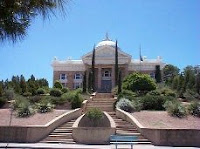 [Source: Nogales International] -- Santa Cruz County supervisors crossed their fingers April 30 and voted to apply for federal Community Development Block Grant funding to continue renovating the 1904 Historic Courthouse on Morley Avenue. The amount of the grant would be $490, 264. The money would pay for a new heating and ventilation system, and upgrade the electrical system, said Mary Dahl, Community Development director.
[Source: Nogales International] -- Santa Cruz County supervisors crossed their fingers April 30 and voted to apply for federal Community Development Block Grant funding to continue renovating the 1904 Historic Courthouse on Morley Avenue. The amount of the grant would be $490, 264. The money would pay for a new heating and ventilation system, and upgrade the electrical system, said Mary Dahl, Community Development director. But the application requires the county to commit $175,536 in leveraged funds. Dahl is optimistic the county will get a Heritage Grant for Historic Preservation to cover the extra cost, as it did with the Robert Damon Recreation Complex, she said. But the county cannot apply for that grant until later this year. Applications are due Dec. 29, 2008. If the county does not receive the Heritage grant, the $175,536 would have to come out of the budget for the following fiscal year, Dahl said.
Florence will 'pick up the pace' on Silver King Hotel
[Source: Florence Reminder] -- The town this summer will once more look for a contractor to complete rehabilitation on the historic Silver King Hotel, in hopes the slower economy will generate more affordable bids. Also holding down costs will be the town's intention to leave the interior mostly unfinished, so a tenant may tailor it to his needs. An architect is at work on the revised plans, town officials said. When the town first sought proposals for completing the hotel's restoration a couple of years ago, the bids came in at more than $1 million, which was double the available funding.
During a walking tour of the downtown historic district last Thursday, Town Manager Himanshu Patel told the gathering of about 40 people the finished project will be a "shell-type building" which can then be leased for retail or offices. The town's ultimate goal remains "a viable reuse of the building and a vibrant downtown," Patel said. Last year, the town had some discussions with three partners who were interested in completing the old hotel at Main and Ruggles for an Irish-themed restaurant and sports bar. But town officials "don't foresee them coming to the table anytime soon" and believe "we need to pick up the pace," Assistant to the Town Manager Jess Knudson said this week. [Note: To read the full article, click here.]
During a walking tour of the downtown historic district last Thursday, Town Manager Himanshu Patel told the gathering of about 40 people the finished project will be a "shell-type building" which can then be leased for retail or offices. The town's ultimate goal remains "a viable reuse of the building and a vibrant downtown," Patel said. Last year, the town had some discussions with three partners who were interested in completing the old hotel at Main and Ruggles for an Irish-themed restaurant and sports bar. But town officials "don't foresee them coming to the table anytime soon" and believe "we need to pick up the pace," Assistant to the Town Manager Jess Knudson said this week. [Note: To read the full article, click here.]
Budget adjustment bill signed for State Archives Building
[Source: Doug Kupel] -- The Legislature passed and the Governor signed an FY2008 budget adjustment bill (HB2620) for the Arizona State Archives Building. This is good news because the bill limits the Archives Building funding cut to $2 million instead of the $3.5 million that had been proposed. In addition, the Library and Archives agency cut was limited to $233,000 instead of the proposed $270,500. The more moderate cut will allow the building to open on time this summer. If you've had contact with the Governor and/or individual legislators regarding the building please send them a short thank-you note.
Suggested language
Dear Elected Official:
I was pleased to learn that the FY2008 budget adjustment bill (HB2620) limited the funding cut for the Polly Rosenbaum State Archives and History building to $2 million. While this is still a significant reduction, it will allow for a measured and logical move into the new building so it can open on time this summer. Thank you very much for supporting this more moderate budget cut for
the building. A larger cut would have been a serious setback.
It has been a difficult birth for the new State Archives building. As with any newborn, responsibility does not stop with delivery. The new building will need proper care and maintenance for years to come. Your continued support will be needed in the future: for equipment, for staffing, and to restore items eliminated in the FY08 budget such as shelves. I appreciate your support of this compromise solution and look forward to the day when Arizona can dedicate the building to many years of productive use.
Sincerely,
Your Name
Suggested language
Dear Elected Official:
I was pleased to learn that the FY2008 budget adjustment bill (HB2620) limited the funding cut for the Polly Rosenbaum State Archives and History building to $2 million. While this is still a significant reduction, it will allow for a measured and logical move into the new building so it can open on time this summer. Thank you very much for supporting this more moderate budget cut for
the building. A larger cut would have been a serious setback.
It has been a difficult birth for the new State Archives building. As with any newborn, responsibility does not stop with delivery. The new building will need proper care and maintenance for years to come. Your continued support will be needed in the future: for equipment, for staffing, and to restore items eliminated in the FY08 budget such as shelves. I appreciate your support of this compromise solution and look forward to the day when Arizona can dedicate the building to many years of productive use.
Sincerely,
Your Name
Thursday, May 15, 2008
Phoenix...Celebrate a place that matters to you!
 [Source: Jim McPherson, National Trust for Historic Preservation] -- National Preservation Month is celebrated during May and the National Trust for Historic Preservation wants you to join in a viral marketing campaign around this year's theme, "This Place Matters." By simply printing a sign and taking a picture, you can tell the story about a place in Phoenix that matters to you. Click here to submit your entry and follow these simple instructions:
[Source: Jim McPherson, National Trust for Historic Preservation] -- National Preservation Month is celebrated during May and the National Trust for Historic Preservation wants you to join in a viral marketing campaign around this year's theme, "This Place Matters." By simply printing a sign and taking a picture, you can tell the story about a place in Phoenix that matters to you. Click here to submit your entry and follow these simple instructions: 1. Register on the National Trust's website, http://www.preservationnation.org
2. Download and print out a special Phoenix “This Place Matters” sign available at http://www.box.net/shared/1xubte0ows. If you know of a spot outside of Phoenix, click on http://www.box.net/shared/c4e9uy9s00 for a sign with the Arizona flag.
3. Snap a photo of people holding the sign and standing in front of a building or place of particular personal significance.
4. Then, upload the photo (or photos) to the National Trust http://www.preservationnation.org/thisplacematters, and post a brief story about the place and why it matters.
We've already had a number of communities participate, including, Fremont, NE and Greenville, OH, just to name a few. So don't get left out. Post your picture today!
Want to do more?
- Spread the word about the campaign by mentioning the campaign in your enewsletter.
- Post your picture and story on your own website and link to PreservationNation.org.
- Challenge your supporters to post other pictures from your town to the site.
- Learn how City Lore and the Municipal Arts Society in New York City have been using their own "Place Matters" campaign for years to advocate for local places at risk by visiting their website at
http://www.placematters.net.
Florence Main Street Program receives national accreditation
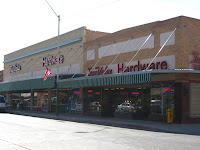 [Source: Florence Reminder] -- The Florence Main Street Program has been accredited as a 2008 National Main Street Program for meeting the commercial district revitalization performance standards set by the National Trust Main Street Center®. The Florence Main Street Program joins over 700 other Main Street revitalization programs being recognized as 2008 National Main Street Programs. Each year, the National Trust Main Street Center and its coordinating program partners announce the list of accredited National Main Street Programs around the country that have demonstrated their ability to follow the Main Street methodology.
[Source: Florence Reminder] -- The Florence Main Street Program has been accredited as a 2008 National Main Street Program for meeting the commercial district revitalization performance standards set by the National Trust Main Street Center®. The Florence Main Street Program joins over 700 other Main Street revitalization programs being recognized as 2008 National Main Street Programs. Each year, the National Trust Main Street Center and its coordinating program partners announce the list of accredited National Main Street Programs around the country that have demonstrated their ability to follow the Main Street methodology. "We congratulate this year's accredited National Main Street Programs for meeting our established performance standards," says Doug Loescher, Director of the National Trust Main Street Center. "Rebuilding a district's economic health and maintaining that success requires broad-based community involvement and support, in addition to establishing a solid organization with sound management that is committed to long-term success." The National Trust Main Street Center works in partnership with Coordinating Main Street Programs throughout the nation to identify the local programs that meet the National Trust Main Street Center's ten basic performance standards.
[Note: To read the full article, click here. Photo source: Florence Chamber of Commerce.]
Scottsdale's Kerr center moves closer to historic status
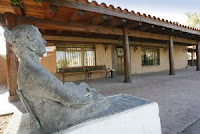 [Source: Julie Janovsky, East Valley Tribune] -- After months of negotiations between representatives of Arizona State University and the city, Scottsdale’s Historic Preservation Commission voted unanimously Thursday evening to accept a historic conservation easement that would protect the exterior of the center’s two adobe buildings and less than one-third of the property’s 1.65 acres, for the next 50 years.
[Source: Julie Janovsky, East Valley Tribune] -- After months of negotiations between representatives of Arizona State University and the city, Scottsdale’s Historic Preservation Commission voted unanimously Thursday evening to accept a historic conservation easement that would protect the exterior of the center’s two adobe buildings and less than one-third of the property’s 1.65 acres, for the next 50 years.Advocates for Kerr Cultural Center and several members of Louise Lincoln Kerr’s family reluctantly accepted the proposed easement and expressed disappointment, saying they felt ASU, the property owner, didn’t go far enough in ensuring protection of the cultural facility because it did not include the center’s interior structures and parking lot as protected areas. Patricia Myers, co-chairwoman of the Concerned Citizens for the Kerr Cultural Center advocacy group, said she’s worried the omission of those items could mean the center at 6110 N. Scottsdale Road could one day be in jeopardy. The center, which Kerr willed to ASU upon her death in 1977, has been hosting concerts and cultural events for nearly 50 years.
[Note: To read the full article, click here. Photo source: Ralph Freso, East Valley Tribune.]
Proposition A: The Phoenix parks and preserve initiative
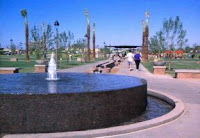 On May 20, 2008, a special election in the City of Phoenix will be held. The campaign for the Phoenix Parks and Preserve Initiative is in full swing.
On May 20, 2008, a special election in the City of Phoenix will be held. The campaign for the Phoenix Parks and Preserve Initiative is in full swing.Background
For the past 10 years, Phoenix voters have invested in outdoor places through the Phoenix Parks and Preserve Initiative. Initiated and passed by 80% of Phoenix voters in 1999, the Initiative has raised over $220 million to build new parks, improve community parks, and purchase pristine Sonoran desert preserve land.
Investments made possible include:
- Community and Neighborhood Parks: Established or renovated 52 playgrounds, 23 shade structures, 35 armadas, 14 restrooms, new sports lighting at 30 parks and 19 fields, and accessibility modifications at more than 25 parks.
- Regional Parks: Developed regional parks, including Paseo Highlands, Steele Indian School, Desert West, Pecos Park, Cesar Chavez Park, as well as the Cave Creek Recreational Area and Camelback Ranch.
- Sonoran Preserve: Purchased 3,759 acres of Arizona State Trust Land, with another 650-acre acquisition planned for this year.
Current funding expires next year, and due to significant population growth and urban sprawl the need for parks and the need to preserve precious parts of our natural desert environment are only growing. Supporters of the Initiative encourage voters to vote “yes” on Proposition A.
What you can do
- Learn more about the Initiative by visiting http://www.phxparks.com/
- If you would like a speaker to visit with an organization that you’re affiliated with, contact Tony Motola at 602-462-2291 or info@phxparks.com
- Watch your mailbox. Vote-by-mail ballots will be mailed the week of April 21.
- Vote either by mail, at early voting locations, or on May 20, 2008.
Historic Prescott cemetery getting new protection from vandals
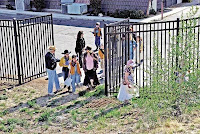 [Source: Joanna Dodder Nellans, Daily Courier] -- A group of volunteers took their first step recently to ensure the safety of a piece of Prescott's history. Fourteen years after its creation, the Yavapai Cemetery Association has raised enough money to start putting up sections of fence to protect the historic Citizens Cemetery along Sheldon Street better from vandalism. Records show 2,750 people were buried here between 1864 and 1939 when it filled up, and many more remain unlisted.
[Source: Joanna Dodder Nellans, Daily Courier] -- A group of volunteers took their first step recently to ensure the safety of a piece of Prescott's history. Fourteen years after its creation, the Yavapai Cemetery Association has raised enough money to start putting up sections of fence to protect the historic Citizens Cemetery along Sheldon Street better from vandalism. Records show 2,750 people were buried here between 1864 and 1939 when it filled up, and many more remain unlisted. For the first 40 years, no map of the cemetery existed, association president Pat Atchison said. A call for information went out, but, by then, much of the personal information was lost to time. The map shows hundreds of graves as "unknown." Until the Cemetery Association came along 14 years ago, the county-owned cemetery was in disrepair, Atchison said. When volunteers cleared out bushes and weeds, it became less vulnerable to vandalism. But by then, only 845 of the burials still had some sort of headstone. "It just seems a shame, because once that's gone, it's just one less thing about that person that's still on the face of the earth," Atchison said. "And it's the history of Prescott."
To contribute to the fence fund, donors may send checks to the Yavapai Cemetery Association, 201 S. Pleasant St., Prescott, AZ 86303. [Note: To read the full article, click here. Photo source: Jo. L. Keener, Daily Courier.]
Wednesday, May 14, 2008
Historic Preservation update for City of Glendale
- The Glendale Historic Preservation Commission was presented a proclamation from Mayor Scruggs at their April meeting declaring May 2008 as National Historic Preservation month in Glendale.
- The Commission is hosting the fifth annual historic preservation tour of Glendale on May 17, 2008. There is a full bus of 35 people taking the tour.
- On May 22, 2008 the Commission will award the 2008 Ruth Byrne Historic preservation Award to John Akers.
- The Preservation Commission is making and installing 27 historic preservation banners throughout historic downtown Glendale.
- This past Sunday at 7:00 PM a new 30 minute production called "Glendale's Hidden Treasures" was aired on Channel 11. It is a terrific review of many of Glendale's lesser known historic resources. It will be shown on a regularly basis on Channel 11.
- 18 large cast bronze interpretative plaques will be installed at various historic resources in addition to 28 National register Plaques for historic resources already registered on the National register. There are already eight interpretative plaques installed.
Casa Grande to get depot from rail deal
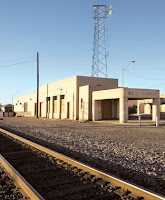 [Source: Harold Kitching, Casa Grande Valley Newspaper] -- Casa Grande has approved its part of a $35 million, four-government agreement that provides help from Union Pacific Railroad with new crossings needed for double-tracking between Yuma and Tucson. In return for not opposing the railroad's double-tracking during hearings by the Arizona Corporation Commission, Casa Grande will receive money toward improvements, including encasing its water pipes near Anderson Road, and will be given the old railroad depot building on Main Street. No money comes with the historic depot, long eyed for preservation.
[Source: Harold Kitching, Casa Grande Valley Newspaper] -- Casa Grande has approved its part of a $35 million, four-government agreement that provides help from Union Pacific Railroad with new crossings needed for double-tracking between Yuma and Tucson. In return for not opposing the railroad's double-tracking during hearings by the Arizona Corporation Commission, Casa Grande will receive money toward improvements, including encasing its water pipes near Anderson Road, and will be given the old railroad depot building on Main Street. No money comes with the historic depot, long eyed for preservation. The agreement says the city and railroad "shall negotiate in good faith" for removing the depot from UP's right of way within a reasonable time, at city expense. It adds that "from and after donation to the city, the city shall fence off the depot as reasonably requested by UPRR and shall be solely responsible for all future maintenance and upkeep of the depot and fencing." Out of the $35 million, Casa Grande and the city of Maricopa will be given $1.5 million each for initial design and engineering for the first two overpasses to cross the double-tracking out of the four eventual crossings required in the agreement.
[Note: To read the full article, click here. Photo source: Steven King, Casa Grande Valley Newspaper.]
Belmont to be new home of Superior town government and chamber of commerce
[Source: Cindy Tracy, MyWebPal.com] -- It’s official! Superior Town Hall is relocating to the Old Belmont Hotel, formerly known as the CAAG Building. The move was approved by Superior Town Council at its May 1 meeting. The historic Main Street building with its interesting history will also be home to the Superior Chamber of Commerce. The council approved a year-to-year lease agreement for the chamber to have a facility in the building that will be manned by volunteers. Interim Town Manager Melanie Oliver cited a possible fiscal impact of the move as $5000 for a new phone system with voice mail and $1500 in building repairs. She said the move would start within the month and be finalized by June 1.
Easement suggested to protect Scottsdale's Kerr Center
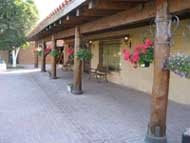 [Source: Lesley Wright, Arizona Republic] -- After hours of debate, Scottsdale Historical Preservation Commissioners said that an Arizona State University conservation easement was the best protection they could get for the Kerr Cultural Center. Commissioners agreed 6-0 Thursday to recommend that the City Council accept the easement so the 50-year-old performance center can receive some protection and be nominated for state and federal historic registers.
[Source: Lesley Wright, Arizona Republic] -- After hours of debate, Scottsdale Historical Preservation Commissioners said that an Arizona State University conservation easement was the best protection they could get for the Kerr Cultural Center. Commissioners agreed 6-0 Thursday to recommend that the City Council accept the easement so the 50-year-old performance center can receive some protection and be nominated for state and federal historic registers.The center at 6110 N. Scottsdale Road consists of the home and studio-performance hall of composer and philanthropist Louise Lincoln Kerr, who donated the site to ASU in 1977. Scottsdale discussed historic zoning for the site, but ASU said the city has no authority to zone state-owned land. The university proposed the conservation easement to reach the same goals. Hundreds of musicians and residents have pleaded with the commission and the university to protect the adjacent parking lot so the center can continue with performances.
ASU officials said the parking lot is not a historic site, but that the terms of the will govern the continued use of the center. Commissioner Nancy Dallett said the city had done its best. "We've done everything in our power to get the best conservation easement we can," Dallett said. "I think this easement is very strong." Commissioner Ed Wimmer said residents would have to keep the university's feet to the fire. "The community here this evening needs to be vigilant because this commission has very limited scope," he said. "You as voters have bigger scope. The state Legislature is your leverage." The City Council is expected to approve the recommended conservation easement at an upcoming meeting.
Sedona Historic Preservation Commission hosts tours of historic places in Sedona in May
 [Source: Sedona.biz] -- Sedona will join thousands of people around the country as part of a nationwide celebration of National Preservation Month in May 2008. “This Place Matters" is the theme of this year’s celebration, which is sponsored by the National Trust for Historic Preservation. Since the National Trust created Preservation Week in 1971 to spotlight grassroots preservation efforts in America, it has grown into an annual month-long celebration observed by small towns and big cities. The purpose is to celebrate the diverse and irreplaceable heritage of our country’s cities and states and enable more Americans to become involved in the growing preservation movement.
[Source: Sedona.biz] -- Sedona will join thousands of people around the country as part of a nationwide celebration of National Preservation Month in May 2008. “This Place Matters" is the theme of this year’s celebration, which is sponsored by the National Trust for Historic Preservation. Since the National Trust created Preservation Week in 1971 to spotlight grassroots preservation efforts in America, it has grown into an annual month-long celebration observed by small towns and big cities. The purpose is to celebrate the diverse and irreplaceable heritage of our country’s cities and states and enable more Americans to become involved in the growing preservation movement.An event in honor of National Historic Preservation Month for Sedona is being planned by the Sedona Historic Preservation Commission (HPC). Friday, May 16th the Commission will co-host an open house at the historic Hart Store, now Hummingbird House on Brewer Road from 2:00 p.m. to 4:00 p.m. The open house will celebrate the Hart Store being added to the National Register of Historic Places. More details will be forthcoming about this free street party intended for the entire community. Pioneer descendants and Hart relatives are planning to attend.
[Note: To read the full article, click here. Photo: Janeen Trevillyan (center holding paper), Historic Preservation Commission Chairperson, leads a recent tour in Uptown, Sedona.]
Tuesday, May 13, 2008
APF accepts nominations for 2008 Most Endangered Historic Places List
 The Arizona Preservation Foundation invites nominations for the 2008 Arizona Most Endangered Historic Places List. By calling attention to our most threatened historic and archaeological sites, we increase public awareness of preservation issues and focus critical attention on selected sites to assist in their preservation. The new list will be announced at the 2008 Arizona Statewide Historic Preservation Conference, June 12-14, 2008. To nominate a site or category of sites, please provide the information requested by June 5, 2008. Click here to learn more and to download a nomination form.
The Arizona Preservation Foundation invites nominations for the 2008 Arizona Most Endangered Historic Places List. By calling attention to our most threatened historic and archaeological sites, we increase public awareness of preservation issues and focus critical attention on selected sites to assist in their preservation. The new list will be announced at the 2008 Arizona Statewide Historic Preservation Conference, June 12-14, 2008. To nominate a site or category of sites, please provide the information requested by June 5, 2008. Click here to learn more and to download a nomination form.Our panel of judges use the following basic criteria for initial consideration: (1) architectural integrity and historical significance, (2) identifiable threat, and (3) likelihood that inclusion on the list will positively impact preservation efforts. Judges also consider geographic and thematic diversity. The selection of sites for the annual list is difficult because the number of treasured resources in jeopardy is so extensive (as evidenced by the high volume of nominations we've received in the past). For every listed site, there are many worthy and significant candidates in similar circumstances. If a site is not selected for Arizona's Most Endangered Historic Places List, it will be placed on the Foundation's internal Properties to Watch List. Any mailed materials (e.g., photos, videos, newspaper clippings) will be kept for our files and reference.
To view the 2007 list, click here. To view the 2006 list, click here. [Photo of Havasu Hotel in Seligman, DEMOLISHED by BSNF Railroad; photo source Dan Lutzick.]
Friday, May 09, 2008
Panels bicker over Casa Grande history
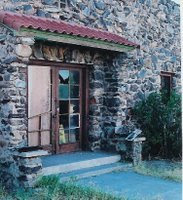 [Source: Harold Kitching, Casa Grande Valley Newspaper] -- Preservation of historic properties in older areas of Casa Grande is turning into a bit of a turf war between the Central City Redevelopment District Subcommittee and city officials who say the Historic Preservation Commission should handle that. The subcommittee, set up mainly to make recommendations on redevelopment in the City Hall and downtown areas, has slowly edged toward preservation, although not all properties are in the redevelopment areas. The city has moved toward heading off the subcommittee, having Housing Director Rosa Bruce handle some of the residential historic properties. The rationale is that her department has the expertise and the access to funds - of which the subcommittee has neither - to be successful.
[Source: Harold Kitching, Casa Grande Valley Newspaper] -- Preservation of historic properties in older areas of Casa Grande is turning into a bit of a turf war between the Central City Redevelopment District Subcommittee and city officials who say the Historic Preservation Commission should handle that. The subcommittee, set up mainly to make recommendations on redevelopment in the City Hall and downtown areas, has slowly edged toward preservation, although not all properties are in the redevelopment areas. The city has moved toward heading off the subcommittee, having Housing Director Rosa Bruce handle some of the residential historic properties. The rationale is that her department has the expertise and the access to funds - of which the subcommittee has neither - to be successful.At a later meeting, the subcommittee was told by Planning and Development Director Rick Miller that, in short, historic preservation should really be handled by the Historic Preservation Commission, the board set up for that specific purpose. Some members of the subcommittee haven't taken the city's turn of agencies happily. The subcommittee has long talked about reworking the city's present preservation ordinance to include a lien provision, allowing the city to do the work to save a building, then filing the lien against the property. The subcommittee took the issue to the City Council but received no clear-cut decision. That lack of solid direction from the city, along with the shift to the preservation commission, has angered subcommittee Chairman Bob Mitchell, a former mayor.
[Note: To read the full article, click here. Photo source: Marge Jantz - The 1927 Fisher Memorial Home in Casa Grande.]
Thursday, May 08, 2008
Hotel Arnold in Benson
 [Source: W. Lane Rogers, Arizona Range News] -- In 1890, Alexander Arnold McGinnis and his wife Nora settled in Benson. Established by the Southern Pacific Railroad in 1880, Benson's first decade witnessed a transition from a town made up largely of single male railroad workers to a more structured community of family homes, businesses, churches, a school, and social and fraternal organizations.
[Source: W. Lane Rogers, Arizona Range News] -- In 1890, Alexander Arnold McGinnis and his wife Nora settled in Benson. Established by the Southern Pacific Railroad in 1880, Benson's first decade witnessed a transition from a town made up largely of single male railroad workers to a more structured community of family homes, businesses, churches, a school, and social and fraternal organizations.Benson was the hub city of railroads and travel in southern Arizona nearly always necessitated making a connection there. With all its hustle and bustle, it was a friendly town that welcomed travelers. It boasted at least two good restaurants and three hotels-the Trask House, Virginia, and Mansion. Still, the McGinnises determined that Benson could support another. Property north of the depot was purchased and in 1907, Hotel Arnold's main building (pictured) was completed at a cost of $4,423. Built in an architectural style that would come to be called Anglo Territorial, the building contained 12 rooms. A double-roofed dwelling was constructed, as well a red brick building that housed four units, an adobe carriage house and half a dozen small cottages. Water was pumped from a well driven by a windmill and a rudimentary generator provided electricity years before the town enjoyed such luxury.
[Note: To read the full article, click here. Photo source: Lane Rogers.]
Historic Preservation Week activities in Willcox May 10
[Source: Ainslee Wittig, Arizona Range News] -- Historic Preservation Week activities will be held on Saturday, May 10, from 10 a.m. to 4 p.m. The 2008 Wheels of Progress will be honored from noon to 2 p.m. at Big Tex Restaurant, located at 130 E. Maley, in Willcox, Ariz. Guest speakers are Gus and Marsha Arzberger, Arizona State Senators. Guest author will be William Kalt, a railroad historian, at 10 a.m. at the Willcox Historic Depot.
The grandson of a Tucson SP accountant, William Kalt, grew up in a proud pioneer Arizona family. History lessons began early for the career public educator, as relatives shared tales of the rough and tumble days of their youth. His story, "Epes Randolph: Railroad Man of the Southwest," won the society's James F. Elliot II award for the best article by a non-professional historian during 2006. Kalt captured oral histories of southern Arizona railroad men and women and did archival research across the southwest to complete his book Tucson Was a Railroad Town. Kalt will also sign books.
For more information contact the Sulphur Springs Valley Historical Society or Chiricahua Regional Museum and Research Center at 520-384-3971. [Note: To read the full article, click here.]
The grandson of a Tucson SP accountant, William Kalt, grew up in a proud pioneer Arizona family. History lessons began early for the career public educator, as relatives shared tales of the rough and tumble days of their youth. His story, "Epes Randolph: Railroad Man of the Southwest," won the society's James F. Elliot II award for the best article by a non-professional historian during 2006. Kalt captured oral histories of southern Arizona railroad men and women and did archival research across the southwest to complete his book Tucson Was a Railroad Town. Kalt will also sign books.
For more information contact the Sulphur Springs Valley Historical Society or Chiricahua Regional Museum and Research Center at 520-384-3971. [Note: To read the full article, click here.]
Wednesday, May 07, 2008
HP Staff tour Phoenix's White Gates House
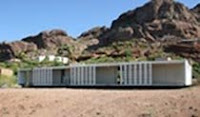 [Source: Barbara Stocklin, Phoenix Historic Preservation Office] -- Kevin Weight of the city's historic preservation office and Jim McPherson of the Arizona Preservation Foundation (APF) met with the owner of the property known as the White Gates House on May 2. The house, which is located at 4918 E. White Gates Drive, near Camelback Mountain, was built during the 1950s and was designed and occupied by Phoenix architect Alfred Newman Beadle. The house is currently vacant and in need of repair; it was listed on APF's list of most endangered properties in Arizona last year. The owner, Lynda Maze, purchased the property with the intention of rehabilitating it and sought advice and assistance from the City and APF. Ms. Maze may request historic designation and a grant to assist with rehabilitation.
[Source: Barbara Stocklin, Phoenix Historic Preservation Office] -- Kevin Weight of the city's historic preservation office and Jim McPherson of the Arizona Preservation Foundation (APF) met with the owner of the property known as the White Gates House on May 2. The house, which is located at 4918 E. White Gates Drive, near Camelback Mountain, was built during the 1950s and was designed and occupied by Phoenix architect Alfred Newman Beadle. The house is currently vacant and in need of repair; it was listed on APF's list of most endangered properties in Arizona last year. The owner, Lynda Maze, purchased the property with the intention of rehabilitating it and sought advice and assistance from the City and APF. Ms. Maze may request historic designation and a grant to assist with rehabilitation.
43rd annual Jerome historic home tour May 17-18
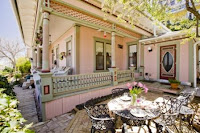 [Sedona.biz] -- Visit 8 historic homes and buildings throughout Jerome on May 17-18 from 9am-3pm as part of the 43rd Annual Jerome Home Tour. This year promises to be an exciting and interesting tour with a new look at the Phelps Dodge Administrative Office which has been beautifully restored at one end of town, down to 2 modern day ‘Jerome Style’ dream homes that have been works in progress for many years and are now ready for a first viewing.
[Sedona.biz] -- Visit 8 historic homes and buildings throughout Jerome on May 17-18 from 9am-3pm as part of the 43rd Annual Jerome Home Tour. This year promises to be an exciting and interesting tour with a new look at the Phelps Dodge Administrative Office which has been beautifully restored at one end of town, down to 2 modern day ‘Jerome Style’ dream homes that have been works in progress for many years and are now ready for a first viewing. A classic Victorian house, a 1904 cottage and authentic Gypsy Caravan, the beautiful and haunting Holy Cross Catholic Church, The Ladies Jail, and a charming 1914 home on the main road into Jerome ...this fills out a roster that gives a cross-section of Jerome then and now. End the tour with refreshments at Jerome's famous 'Spook Hall.' The piece de resistance of the tour is The Pink Lady House (pictured). The Riordan House, now referred to as The Pink Lady House because of its lovely and authentic Victorian paint scheme, was built in 1898. [Note: To read the full article, click here.]
Friday, May 02, 2008
"Comprehensive resource stewardship" conference in Tucson
[Source: Brian Kenny, National Park Service Southern Arizona Office] -- The National Park Service (NPS) and affiliated organizations are sponsoring a "Comprehensive Resource Stewardship" conference scheduled for May 20-23, 2008 at the Marriott Starr Pass Resort in Tucson, Arizona. We have identified a need to recruit competent volunteers to attend the conference to provide assistance monitoring rooms and concurrent sessions and to help with minor logistical issues that help make a conference run smoothly. Volunteers, who provide support for two concurrent sessions or for a day's service, get to attend the conference for free. Individuals in the southern Arizona area who wish to volunteer to assist at the conference should contact Brian Kenny at (602)794-3819, or via email at brian_kenny@nps.gov.
Official call for papers
The conference provides an opportunity for NPS park and regional office resource managers and specialists to interact with one another and share resource highlights, concerns, problems and solutions by presenting and discussing cultural, natural and integrated resource management issues facing parks in this region. Park staff (along with others who have conducted work on behalf of parks) are invited to submit proposals for panel/discussion sessions, and presentations on key findings or solutions to resource management challenges through talks or posters. The Program Committee encourages presentations on interdisciplinary work that combines natural and cultural resource efforts, as well as research or projects conducted specifically for those two types of resources. Suggested topics include cultural and/or natural resource work pertaining to:
• Monitoring and managing effects of climate change in parks • Fire management and the human interface • Best practices to manage research in parks • How concessioners contribute to cultural and natural resource management • "Greening" the parks and sustainability efforts by parks and partners • Social and cultural aspects of wildlife management and appreciation • "Rodent in Ruins" and other Integrated Pest Management issues • Wilderness management in the new millennia • Applying results of research and monitoring to park issues
This list is not intended to be limiting – we invite other submissions on timely topics. Panels/Discussion Sessions are encouraged to promote interaction between subject matter experts, resource managers, and the audience. Panel should have no more than 4 presenters with 15 minutes per presentation, followed by 30 minutes for discussion facilitated by the panel/discussion leader. If you propose a panel/discussion, please specify potential and committed panelists, and the discussion leader/group facilitator (who may be one of the panelists). Key Findings Presentations will be limited to 15 minutes per person, plus 5 minutes for questions.
Since this conference encourages interaction between natural and cultural resource managers or specialists, rather than segmented subject matter experts in different concurrent sessions, proponents should clearly indicate how their presentation would be of interest to a broad audience of park staff and partners. Poster Sessions are an opportunity to visually represent timely research, inventory and monitoring, or management activity. Presenters must attend their poster during a scheduled poster session and be available to discuss their work with attendees. No other sessions will be held concurrent with the poster session, although posters will be viewable at other times during the conference. Each poster should be designed for placement on wall board no larger than 4' by 3'. The conference also allows an opportunity to conduct discipline-specific affinity meetings the day before the conference (May 19) and perhaps on Friday (May 23). Additional information on these meetings will be provided as they are finalized.
Official call for papers
The conference provides an opportunity for NPS park and regional office resource managers and specialists to interact with one another and share resource highlights, concerns, problems and solutions by presenting and discussing cultural, natural and integrated resource management issues facing parks in this region. Park staff (along with others who have conducted work on behalf of parks) are invited to submit proposals for panel/discussion sessions, and presentations on key findings or solutions to resource management challenges through talks or posters. The Program Committee encourages presentations on interdisciplinary work that combines natural and cultural resource efforts, as well as research or projects conducted specifically for those two types of resources. Suggested topics include cultural and/or natural resource work pertaining to:
• Monitoring and managing effects of climate change in parks • Fire management and the human interface • Best practices to manage research in parks • How concessioners contribute to cultural and natural resource management • "Greening" the parks and sustainability efforts by parks and partners • Social and cultural aspects of wildlife management and appreciation • "Rodent in Ruins" and other Integrated Pest Management issues • Wilderness management in the new millennia • Applying results of research and monitoring to park issues
This list is not intended to be limiting – we invite other submissions on timely topics. Panels/Discussion Sessions are encouraged to promote interaction between subject matter experts, resource managers, and the audience. Panel should have no more than 4 presenters with 15 minutes per presentation, followed by 30 minutes for discussion facilitated by the panel/discussion leader. If you propose a panel/discussion, please specify potential and committed panelists, and the discussion leader/group facilitator (who may be one of the panelists). Key Findings Presentations will be limited to 15 minutes per person, plus 5 minutes for questions.
Since this conference encourages interaction between natural and cultural resource managers or specialists, rather than segmented subject matter experts in different concurrent sessions, proponents should clearly indicate how their presentation would be of interest to a broad audience of park staff and partners. Poster Sessions are an opportunity to visually represent timely research, inventory and monitoring, or management activity. Presenters must attend their poster during a scheduled poster session and be available to discuss their work with attendees. No other sessions will be held concurrent with the poster session, although posters will be viewable at other times during the conference. Each poster should be designed for placement on wall board no larger than 4' by 3'. The conference also allows an opportunity to conduct discipline-specific affinity meetings the day before the conference (May 19) and perhaps on Friday (May 23). Additional information on these meetings will be provided as they are finalized.
Subscribe to:
Posts (Atom)